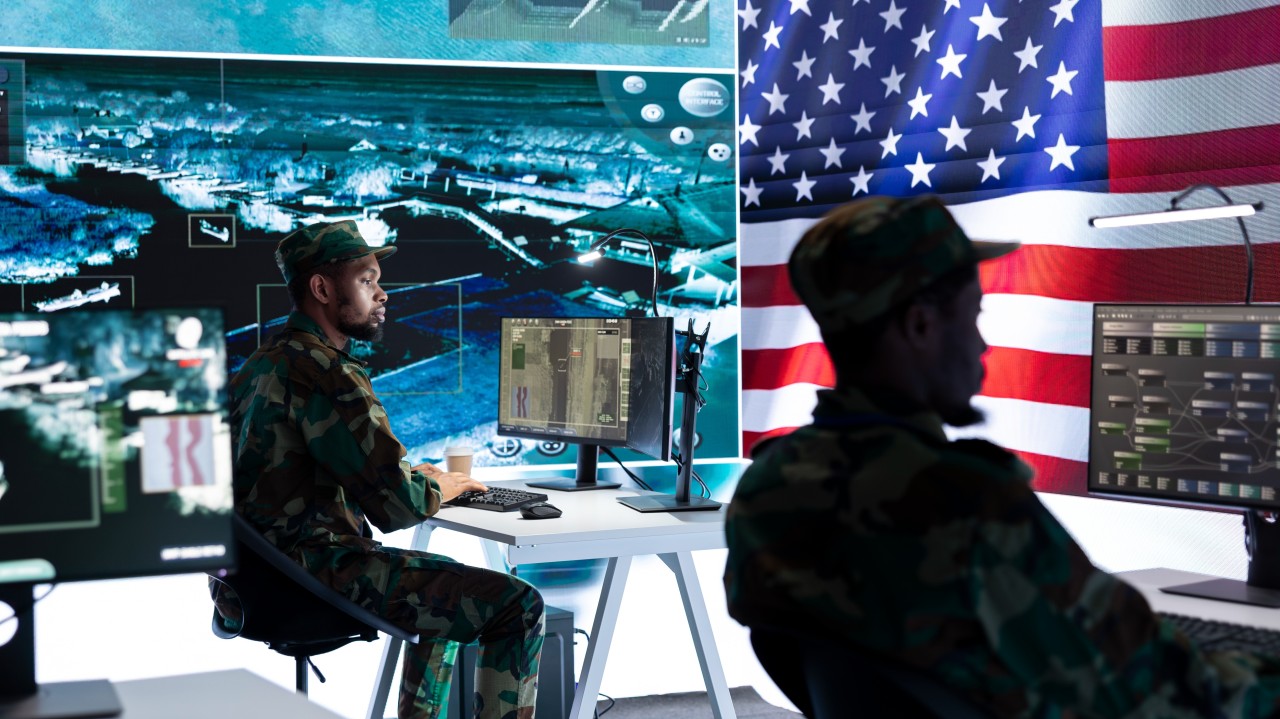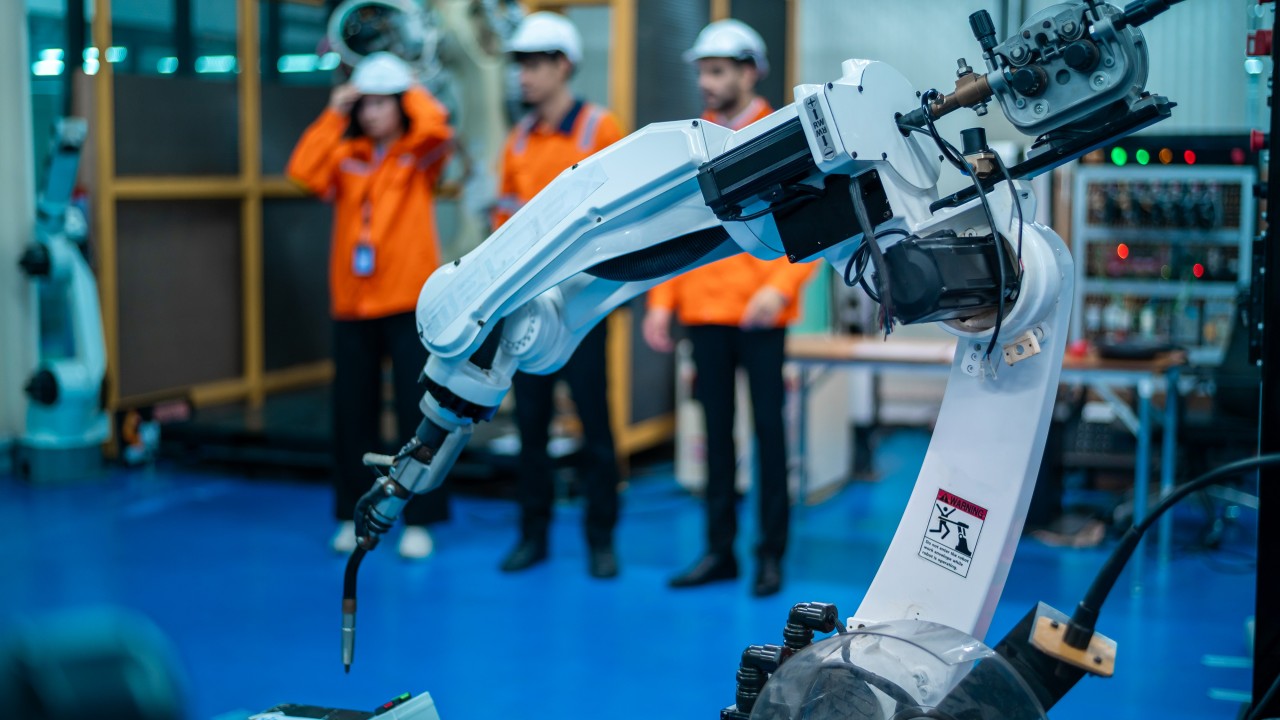
The Age of the Talking Machine
What if robots learned like human children, not engineers?
The Next Great Leap in Robotics
Let’s be blunt: real-world robotics training is broken. It’s slow, dangerous, expensive—and always a step behind.
But what if we flipped the paradigm? What if robots could play before they work?
What if we trained them not in labs or warehouses, but in fully simulated, photorealistic game worlds—the same engines that built Fortnite, Half-Life, and countless simulations for military, medical, and more?
That’s not a dream. It’s happening now. Robots are being trained with trial and error. Much like human children learn.

The world’s smartest robotics teams are turning to Unity, Unreal Engine, and other game engineers to build synthetic realities where AI agents can run, fall, climb, fail, and try again—at scale, at speed, and without breaking anything.
This simulation-first revolution is transforming the very nature of robotics. We’re witnessing a shift as profound as the move from command-line to GUI, or from analog to digital.
Example, Training A Café Robot
Imagine you’re trying to teach a robot how to make and serve coffee in a busy café. In the real world, that would mean buying expensive equipment, risking spills or accidents, and spending weeks watching the robot fail as it learns how to move, pour, and interact with customers.
Now imagine instead that the robot could be trained entirely in a virtual café—a lifelike or exact replica 3D environment where it can practice tasks like finding the milk, steaming it, placing a cup on the counter, and even responding to orders like “one oat latte, extra hot.” Every mistake costs nothing. Every spilled virtual coffee can be cleaned up instantly. The robot can repeat the same task millions of times, from every possible angle, until it gets it right.
This is the power of robotic simulation.
Using game engines like Unity or Unreal Engine, developers create detailed digital worlds where robots can learn through trial and error, just like a human might—but at superhuman speed. In our coffee shop example, the robot doesn’t just learn to make one latte. It learns how to recognize a messy counter, navigate around customers, adapt to different milk carton placements, and respond politely when a customer asks, “Is this decaf?” Once it’s mastered these skills in simulation, the same model can be uploaded to a real robot, allowing it to walk into a café and perform with surprising confidence—having already made thousands of cups in its virtual life.
This example is one of many and can apply to a variety of human tasks in factory and other settings.

Who’s Already Moving?
Simulation-first robotics isn’t just an idea—it’s already transforming real industries. From logistics to disaster response, leading teams are using virtual environments to train and test robots faster, safer, and at scale. These aren’t edge experiments—they’re frontline innovations shaping the future of automation:
- Logistics giants simulating 10,000 warehouse layouts a day
- Manufacturers running months of robotic assembly in minutes
- Search and rescue teams training bots in simulated disasters
- Home robotics developers teaching vacuum bots to navigate chaos

The Reason Why Game Simulation is Taking Off In Robotics.
The rise of game-engine simulation in robotics isn’t just a technological curiosity—it’s a practical breakthrough. As industries demand smarter, faster, and safer training environments for autonomous systems, simulation offers tangible advantages that real-world testing simply can’t match. From slashing development costs to enabling risk-free trial-and-error, here’s why simulation-first robotics is gaining momentum:
- Cost Reduction – Simulation cuts real-world R&D costs dramatically
- Scalability – Sim engines can generate tens of thousands of training scenarios per hour
- Safety – Dangerous conditions (e.g., fire, radiation, heights) can be tested with zero risk
- AI-First Design – Simulation integrates natively with RL agents, LLMs, and computer vision
Why Should You (or your Company) Care About Robotic Simulation & What is The Potential Addressable Market Size?
Market Forecast For Household Robotics
The global household robotics market is poised for explosive growth.
Valued at approximately USD 14.7 billion in 2024, the market is projected to reach USD 96 billion by 2034.
Driven by rising consumer demand, AI integration, and advances in automation. This represents a compound annual growth rate (CAGR) of 20.6% over the ten-year period, underscoring the rapid acceleration of robotics adoption in everyday life.
Of course these figures can be disputed and many have given much loftier forecasts with Elon Musk notably predicting that 10 billion humanoid robots will be in use by 2040.

Forecast For The Robotic Simulator Market
The robotic simulator market is projected to grow by USD 1.89 billion between 2023 and 2028, representing a compound annual growth rate (CAGR) of 23.3%.
This rapid expansion is fueled by rising demand for industrial robots across sectors such as manufacturing, automotive, and healthcare, where organizations seek to boost productivity, lower costs, and enhance product quality. Open-source platforms are playing a pivotal role in democratizing access to advanced simulation tools, enabling smaller firms and research institutions to innovate. However, challenges remain: integration complexities and the high cost of premium simulators continue to be barriers for widespread adoption. To succeed in this evolving space, companies are encouraged to develop user-friendly, cost-effective solutions and form strategic partnerships, especially with open-source communities. As automation accelerates, robotic simulation stands out as a critical enabler of scalable, intelligent systems.
Who Are The Builders of the Synthetic Future?
Behind the surge in simulation-first robotics is a rapidly expanding ecosystem of builders—from global tech giants to open-source innovators. These are the platforms, companies, and research labs creating the synthetic environments where tomorrow’s robots are born, trained, and tested. Together, they’re laying the foundation for a new era of embodied intelligence.
Simulation Platform Powerhouses
Leading the charge in building the foundational simulation environments, these platforms provide the core tools and physics engines that enable large-scale robotics training across industries.
- Unity – Robotics Hub and Simulation Pro targeting vision AI and warehouse automation
- Unreal Engine (Epic Games) – Chaos Physics and MetaHuman plugins support high-fidelity physics and human-robot interaction
- NVIDIA – Isaac Sim in Omniverse delivers GPU-accelerated robotics simulation with deep ML integration
Simulation AI Leaders
These companies focus on the intersection of AI and robotics, creating advanced learning algorithms and behavior models that thrive within simulated environments.
- Intrinsic (Alphabet) – Focused on behavior learning and adaptive robotics through sim environments
- OpenAI – Pioneered RL-driven robotics with Dactyl and Gym
- Boston Dynamics AI Institute – Developing proprietary tools to bridge real-world physics and simulation pre-training
Academic & Open-Source Tools
Powering research and innovation, these open platforms and academic projects provide accessible, high-fidelity simulation environments that accelerate embodied AI and robotics experimentation.
- Isaac Gym – Open-source GPU-based RL platform
- AirSim (Microsoft Research) – High-fidelity drone and vehicle simulation
- Habitat-Sim (FAIR) – For photorealistic indoor navigation and embodied AI experimentsHome Robotics
Big Players In Home Automation
Simulation is revolutionizing how domestic robots are trained, helping them adapt to the unpredictable, cluttered, and highly personalized environments of modern homes. From cleaning floors to handling dishes, these robots now learn in digital replicas of real-life spaces before setting foot—or wheel—into a physical one.
- Dyson – Building next-generation home assistants trained in rich simulated households that include mess, motion, and human unpredictability
- iRobot – Using simulation to train Roombas to adapt to dynamic furniture layouts, pet messes, and personalized cleaning routines
- Samsung (Bot Handy) – Teaching robotic arms to pour drinks, do light kitchen tasks, and load dishwashers using simulated home kitchens
- Tesla (Tesla Bot) – Leveraging internal tools and game-engine simulation for general-purpose home and workplace assistance tasks
- Amazon (Astro) – Using simulation to improve indoor navigation, obstacle avoidance, and integration with Alexa smart home systems
- Meta (AI Habitat) – Supporting embodied AI research for home robotics with photorealistic indoor training environments
- Ecovacs (China) – Developing advanced cleaning robots trained in diverse virtual environments to handle international home layouts
- Roborock (China) – Simulating real-world challenges like cables, thresholds, and multi-floor navigation to improve AI pathing
- Blue Ocean Robotics (Denmark) – Using simulation for service-oriented bots like UV disinfection and elder care
- Misty Robotics (U.S.) – Training assistant robots for hospitality and home care with user-customizable skills in simulated settings
- Temi (Israel) – Focusing on remote presence and elder care robots trained to navigate homes and respond conversationally via simulation
- Neato Robotics (U.S./Germany) – Incorporating simulation to refine lidar navigation and smart room mapping

The Opportunities & Risks
As simulation-first robotics moves toward mainstream adoption, it brings with it both transformative opportunities and critical risks.
On one hand, the ability to create digital twins at scale, integrate with large language models (LLMs), and generate monetizable synthetic data opens new frontiers for innovation, speed, and revenue.
Companies that embrace these advances can radically compress time-to-market and build smarter, more adaptive systems. On the other hand, success depends on navigating real challenges—including sim-to-real performance gaps, vendor lock-in, and emerging regulatory hurdles. The path forward is rich with potential—but it requires strategic foresight and technical rigor.
Big Opportunities
- Digital Twins: Imagine making a super-realistic virtual copy of a factory, store, or city. Computers use this to practice tasks and predict problems before they happen in real life.
- Using Smart Language Models: Combining simulations with AI that understands and talks like humans helps robots explain what they’re doing and make smarter decisions.
- Selling Data: Companies can create and sell useful training data made in simulations to help train other AI systems faster and cheaper.
- Faster Development: Using simulations means building and testing robots or products can happen in days instead of months, speeding up new inventions.
- Custom Training: Simulations can be changed easily to teach robots new skills for different jobs or places.
- Global Access: Companies worldwide can use the same virtual training tools without needing physical machines or labs.
Important Risks
- Simulation vs. Reality: Sometimes the virtual world isn’t perfect, so robots trained there might get confused or fail when they’re in the real world and an object is placed in the way that was not in the training data.
- Getting Stuck with One Company: If you use only one company’s simulation tool, it might be hard to switch later or work with other tools or teams.
- Safety Problems: Robots trained only in safe virtual places might not handle tricky or unexpected real-life situations well, like a wet floor due to inclement weather.
- Rules and Laws: It can take a long time for governments to approve robots trained in simulations before they can be used in real homes or workplaces.
- Data Privacy: Using a lot of simulated or real data might create worries about who owns the information or how it’s protected.
- High Costs: Some advanced simulation tools and robots can be very expensive to build and maintain.
- Over-Reliance on Simulation: If companies trust simulation too much, they might skip important real-world testing, leading to mistakes or accidents.

What Forward-Thinking Teams Should Consider
Understand the Need and Identify Opportunities First, recognize where simulation and automation can help your business. For example, a company like Amazon uses simulations to optimize warehouse robots, saving time and reducing errors. Look for repetitive, low-risk tasks in your operations that could be automated or improved with simulated training.
Start Small with Experiments Try running small pilot projects using different simulation tools like Unity or Unreal Engine. Test how well these platforms help your AI systems learn and adapt. These experiments will show you what works best before you scale up.
Build the Right Team Hire people who know game engines, real-time physics, and animation—experts who can create realistic virtual worlds and help your robots learn in them. The right talent will speed up your progress and avoid costly mistakes.
Automate Low-Risk Tasks First Begin automating simple, low-risk parts of your business. For example, use simulated training to teach a robot how to organize inventory or clean a workspace before moving on to more complex jobs. This approach minimizes risks while demonstrating clear benefits.
Final Thought: Robots Need a Childhood
Every human starts with play. Trial and error. Cause and effect. Failure without consequence.
If we want robots to think, adapt, and live in our chaotic world, we must give them the same gift: a safe place to learn dangerously.
Robotic simulation is redefining how machines learn and interact with the world around them.
By allowing robots to “play” in rich, virtual environments—much like human children do—we can accelerate their development safely, efficiently, and at scale. This shift not only reduces costs and speeds innovation but also opens the door to smarter, more adaptable machines capable of tackling complex tasks in factories, homes, and beyond.
For businesses and innovators, embracing simulation-first robotics is no longer optional—it’s essential. With a rapidly growing market and an expanding ecosystem of powerful platforms and AI specialists, the tools to build the robots of tomorrow are within reach. Yet success demands careful planning: starting with small experiments, building the right talent, and automating low-risk processes first.
By thoughtfully navigating both the opportunities and challenges ahead, organizations can unlock transformative value and help shape a future where robots learn, grow, and work alongside us—just like children learning to explore the world.
What do you think about simulation training robots? Message me Mike Sorrenti GAME PILL to start a discussion.
References:
https://www.futuremarketinsights.com/reports/household-robot-market
https://www.technavio.com/report/robotic-simulator-market-industry-analysis





